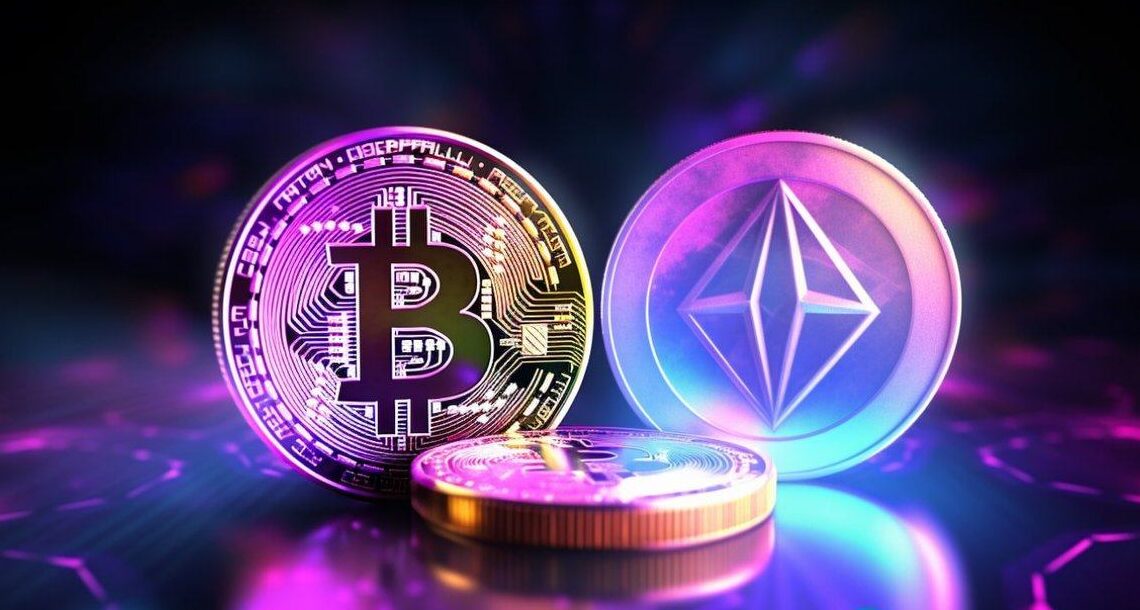NFTs, or non-fungible tokens, have become quite popular as a new way to own, trade, and make digital assets. NFTs are distinct digital entities that are not susceptible to copying or one-to-one trading. This uniqueness sets NFTs apart from cryptocurrencies like Bitcoin and Ethereum. They are based on blockchain technology. This uniqueness, along with the security and openness of blockchain, has opened up new opportunities in art, games, music, and virtual real estate. Many people call this trend a digital ownership revolution.
NFTs and Blockchain Ownership
NFTs are digital proofs of ownership that are stored on blockchain networks. These tokens show that you possess a certain digital item, like a picture, video, music file, virtual land, or even tweets. While fungible cryptocurrencies have identical units, NFTs are unique. Each token is unique and valuable due to its limited edition.
Ethereum’s blockchain is still the best place to make and trade NFTs because it has smart contract features. However, alternative choices such as Solana and Flow are also available. Additionally, Binance Smart Chain is becoming more popular because it offers faster and cheaper transactions. An individual creates an NFT . They “mint” a token that connects to digital material and metadata that proves the asset’s legitimacy and provenance, making sure that its history can be tracked and can’t be changed.
NFT Milestones: From CryptoPunks to Global Fame
In 2017, the NFT trend started to get more attention with initiatives like CryptoPunks and CryptoKitties. Larva Labs created CryptoPunks, a collection of 10,000 algorithm-generated pixel art characters. People could buy and sell them on Ethereum. This project showed how to put digital scarcity and ownership on the blockchain. CryptoKitties was a blockchain-based game with collectible digital cats that each had their own special features. The project demonstrated the potential applications of NFTs in gaming and virtual economies.
 In 2021, NFTs became well-known all around the world. Beeple’s digital art piece “Everydays: The First 5000 Days” sold for an unbelievable $69 million at a Christie’s auction, changing how people think about the value of digital art. Famous singers like Grimes and big companies like Nike and Adidas got into the NFT area, making unique items and experiences. Sports leagues established systems like NBA Top Shot, where fans could buy officially sanctioned digital highlights. This made NFTs even more popular.
In 2021, NFTs became well-known all around the world. Beeple’s digital art piece “Everydays: The First 5000 Days” sold for an unbelievable $69 million at a Christie’s auction, changing how people think about the value of digital art. Famous singers like Grimes and big companies like Nike and Adidas got into the NFT area, making unique items and experiences. Sports leagues established systems like NBA Top Shot, where fans could buy officially sanctioned digital highlights. This made NFTs even more popular.
Smart Contracts and NFTs
NFTs use smart contracts, which are contracts that run themselves and set the rules for transferring tokens without the need for a middleman. When you make an NFT, the smart contract gives it a unique ID that is linked to metadata that describes the asset and its owner. A blockchain ledger stores this information, maintaining a permanent and open record of all transactions and ownership changes. Verification of ownership is open to everyone and not tied to a single location, which lowers the risk of fraud and forgery that is frequent with physical items and digital piracy. Smart contracts also let producers put royalties right into the token’s code, which means they will get a cut of future sales.
This innovation changes the way artists and content creators make money from their work, allowing them to make money from it long after the first sale. NFT marketplaces like OpenSea, Rarible, and Foundation make it easy to buy, sell, and auction NFTs. They also work with wallet services like MetaMask to keep digital assets safe. Layer 2 solutions and alternative blockchains are helping to solve problems like high transaction fees and network congestion as the ecosystem grows. This makes it easier to trade NFTs.
ChatGPT said:
NFTs have changed the creative industries by giving artists and entertainers direct access to audiences and income streams throughout the world. By turning their digital works into tokens, creators may get behind traditional gatekeepers like galleries and labels, protect their intellectual property rights, and connect with fans through unique digital collectibles or experiences. In video games, NFTs allow users to truly own items such as weapons, character weapons, character skins, or virtual real estate. Games like Axie Infinity have come up with “play-to-earn” models, which let players earn valuable NFTs that can be sol on secondary marketplaces. This creates actual business prospects.
Virtual worlds such as Decentraland and The Sandbox utilise NFTs for the sale of virtual land. This lets users build, socialise, and make money in the immersive metaverse. NFTs have also changed the way people gather things. Fans may now interact with and own bits of their favourite teams or celebrities in innovative ways, like digital trading cards, sporting highlights, and branded products. This digital ownership creates stronger linkages between brands and communities, which opens up new ways to market and connect with fans.
Challenges and Criticisms of NFTs
NFTs have a lot of potential, but they also have many problems and critics. Ethereum’s proof-of-work consensus uses a lot of energy, which is bad for the environment. However, the transition to proof-of-stake aims to significantly reduce the carbon footprint. Some people think of NFTs as a speculative bubble instead of long-term investments because of speculation and market volatility in NFT digital ownership.
 In many places, the laws about intellectual property and copyright are still unclear. This is because the problem of making or copying digital works without permission is becoming more common. Moreover, the permanence of NFT metadata depends on its off-chain storage, posing a risk if the linked files lose their digital ownership.
In many places, the laws about intellectual property and copyright are still unclear. This is because the problem of making or copying digital works without permission is becoming more common. Moreover, the permanence of NFT metadata depends on its off-chain storage, posing a risk if the linked files lose their digital ownership.
ChatGPT said:
NFTs are changing quickly as time goes on. Technical standards like ERC-1155 let you mint many tokens at once and make semi-fungible tokens, which makes digital assets more useful. Interoperability projects want to make it possible for NFTs to travel easily between multiple blockchains and platforms, which would improve the experience for users. More and more, NFTs are being used with augmented reality (AR) and virtual reality (VR) to make experiences that are both interactive and immersive, blurring the barriers between the actual world and the digital world of NFT digital ownership.
Fractional NFTs are becoming more popular. They let people share ownership of pricey digital assets, which makes high-value NFTs available to more people. Bioorganisations are still testing NFTs for marketing purposes, providing people with special access and selling digital goods. As metaverse platforms get better, NFTs become essential for confirming identification, protecting property rights, and doing business in these virtual worlds.
Final thoughts
If you want to learn more, “Blockchain Basics”, “Ethereum Smart Contracts”, and “The Rise of the Metaverse” might provide you some useful background. Research studies, the top NFT marketplace websites, and the documentation from the Ethereum Foundation are all valuable resources. are all valuable resources. Blockchain and digital ownership are all examples of external authoritative sources.

